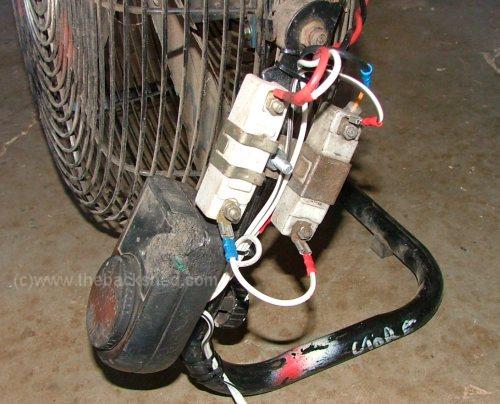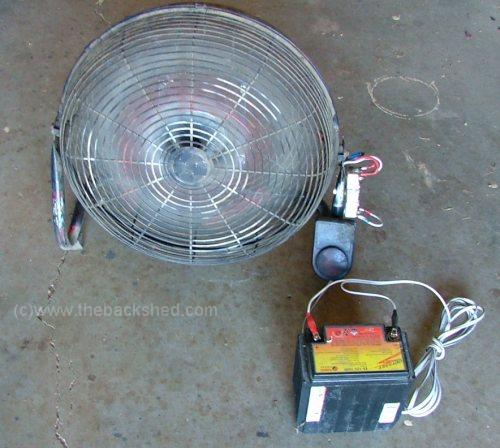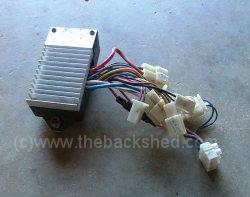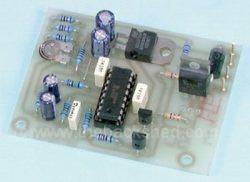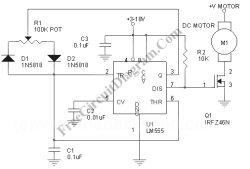 |
|
|
| Site Navigation
Projects & Information
»General Information»Wind turbine Projects »The F&P Smartdrive »Electronic projects »Microcontroller projects »Miscellaneous Kits & Parts
»Basicly Natural Pty Ltd»PVC & Aluminium blades »Scale model farm windmills »Price Watch Discussion Forums
Handy Links
»Wind»Solar »Electric Vehicles »Electronics »Micro Controllers »General Interrest About TheBackShed Getting Started Privacy Policy |
The fan has a 4 position switch, for Off, and speeds 1, 2, and 3. I wanted the same 3 speeds for the 12v conversion. There are several ways to control a DC motors speed, and I decided to use one of the simplest, series resistors. I used a couple of car ballast resistors. Each resistor has a resistance of 1.5 ohms and can handle 50 watts. The circuit below shows how I connected them up. The result was spot on, the slowest speed was a gentle breeze, next up was about half full speed, and full speed was pretty strong!
Here you can see where I mounted the resistors. 12v is a safe voltage so I don't need to cover the connecters, but I will add a cover in the future to protect the resistors againsts bumps and knocks.
The finished fan up and running. I'm very happy with this project, it was a easy build with good results. I can also use the fan as a dump load.
|
Efficiency.
While series resistors is a easy way to control a DC motor in this application, its not the most efficient. Some power is lost as heat in the resistors. We can use ohms law and V*I=W to work out how much is wasted as heat. Using a amp meter I took the following readings.
| Speed | Fan Current |
| Min Speed | 1.9A |
| Medium Speed | 2.7A |
| Max Speed | 4.2A |
We can use I2R to get watts dissipated from each resistor. Total power drawn from the battery is worked out with Watts=Volts X Amps.
| Speed | Current | R1 1.5r | R2 1.5r | Power wasted as heat |
Power drawn from battery |
Power used to drive fan |
Efficiency % |
| Min Speed | 1.9A | 5.4w | 5.4w | 10.8w | 22.8w | 12w | 52% |
| Medium Speed | 2.7A | Not Used | 10.9w | 10.9w | 32.4w | 21.5w | 66% |
| Max Speed | 4.2A | Not Used | Not Used | None | 50.4w | 50.4w | 100% |
You can see on minimum speed, almost half the power is wasted as heat in the resistor. The total draw from the battery is 22.8w, 10.8w is wasted as heat and the remaining 12w is used by the fan. On medium speed, about 1/3 of the power is wasted as heat. At full speed, all power is sent to the motor, none wasted.
We are still using less battery power than using the fan at a higher speed, but if you need to save watts, you might want to consider a more efficient way to control the motor power.

